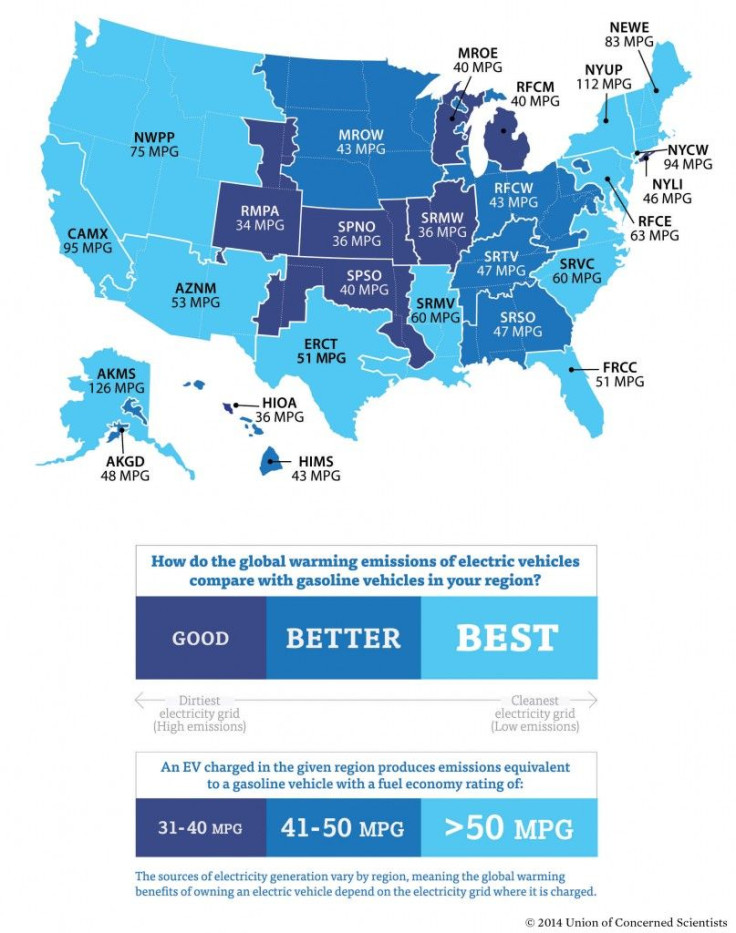Electric Car Pollution: Here Are The Best Places In The US To Own An Electric Vehicle

Any way you look at it, electric cars are better for the environment than their gas-burning rivals. Lacking tailpipe emissions, EVs are great for urban areas with smog problems. But as this map released recently by the Union of Concerned Scientists shows, EV efficiency varies greatly thanks to the nation’s patchwork of energy sources used to generate electricity.
If you drive a Nissan Leaf in Alaska, for example, you’re emitting the equivalent of a gasoline-powered car that gets 126 miles to the gallon due to the state’s heavy use natural gas, which pollutes less than power derived from coal, and hydroelectric power. Thanks to New York’s heavy reliance on hydroelectric and nuclear power, an EV there gets the equivalent of 112 mpg. California’s high concentration of solar and wind projects and low dependence on coal means EVs there are emitting heat-trapping gases equivalent to a gas-burning 95 mpg.
But when it comes to the center of the country, EV efficiency drops significantly. An EV in Colorado is an average of nearly three times less efficient than the same car would be if it were plugged into California’s electrical grid. Similar comparisons apply in Kansas, Missouri, Michigan, Minnesota and Oklahoma, states that still rely heavily on coal as part of their energy mixes. EVs pollute about the same as the most efficient gas-hybrids on the market in these states.
Electricity in most places is far from a zero-emission source of energy, but it does have an advantage over gasoline because nationwide it draws about 31 percent of its energy from renewables and nuclear. Natural gas extraction also has helped wean power plants off coal, which has lowered greenhouse gas emissions from the power grids.
Between 2000 and 2012, the use of natural gas to produce electricity has risen from 12 percent to 30 percent. At the same time dependence on coal has declined from 52 percent to 37 percent, according to the U.S. Energy Information Administration.
The Union of Concerned Scientists warns against becoming overly reliant on natural gas. Though it emits fewer pollutants than coal, it’s really just the lesser of two evils when it comes to heat trapping emissions. Without adopting more solar and wind sources, the U.S. will not be able to meet its greenhouse gas reduction goals by simply replacing coal with natural gas. Further exacerbating the issue, the group says nuclear power will be virtually gone in the next 20 years as aging plants are retired and new ones aren’t in the works. Replacing nuclear with natural gas would actually increase the amount of greenhouse gases.
But for the time being, drivers of electric cars in many parts of the country are emitting far fewer pollutants than any gas-burning vehicle in the market. The science advocacy group estimates that 60 percent of Americans now live in parts of the country where an electric vehicle is the best driving option for reducing their greenhouse gas emissions.
© Copyright IBTimes 2024. All rights reserved.






















